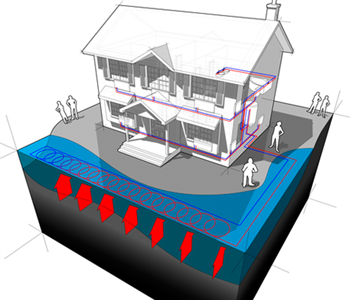
As people around the globe become more aware of the impact that energy consumption and generation are having on the environment, the efforts to create more environmentally friendly products and renewable energy are steadily increasing.
Geothermal energy, is a process that uses natural heat from the ground to heat and cool homes. It is becoming more and more widely used. Following are the advantages and disadvantages of geothermal systems.
A geothermal system uses natural heat from the ground to generate energy in order to not only heat a home, but also cools the home.
A geothermal system can save you as much as 60% on energy costs yearly.
While a heat pump has a service life of approximately 20 years, the fact that an underground geothermal system is guarded from the elements means that it can last more than 50 years.
Contrary to popular belief, the required maintenance of a geothermal system is not costlier or more demanding than maintenance on a traditional electric heating and cooling system.
The technology associated with geothermal energy has been tested and proven for more than 20 years now.
Geothermal systems will be certified by the Canadian GeoExchange Coalition to ensure quality.
For an average sized house, you can expect to spend between $20,000 and $40,000 to install a geothermal system.
It is possible that installing a geothermal system in an existing home could require modifications to the existing distribution system. It is also possible that auxiliary heating devices such as electric baseboard heaters have to be installed.
The type of ground that must be drilled to install the system will have a direct impact on the overall cost of installing the system. This means that it is possible that drilling could significantly disturb the current landscaping.
As a manufacturer of environmental drilling products, Plastech Plus inc. is proud to encourage reducing the collective carbon footprint.